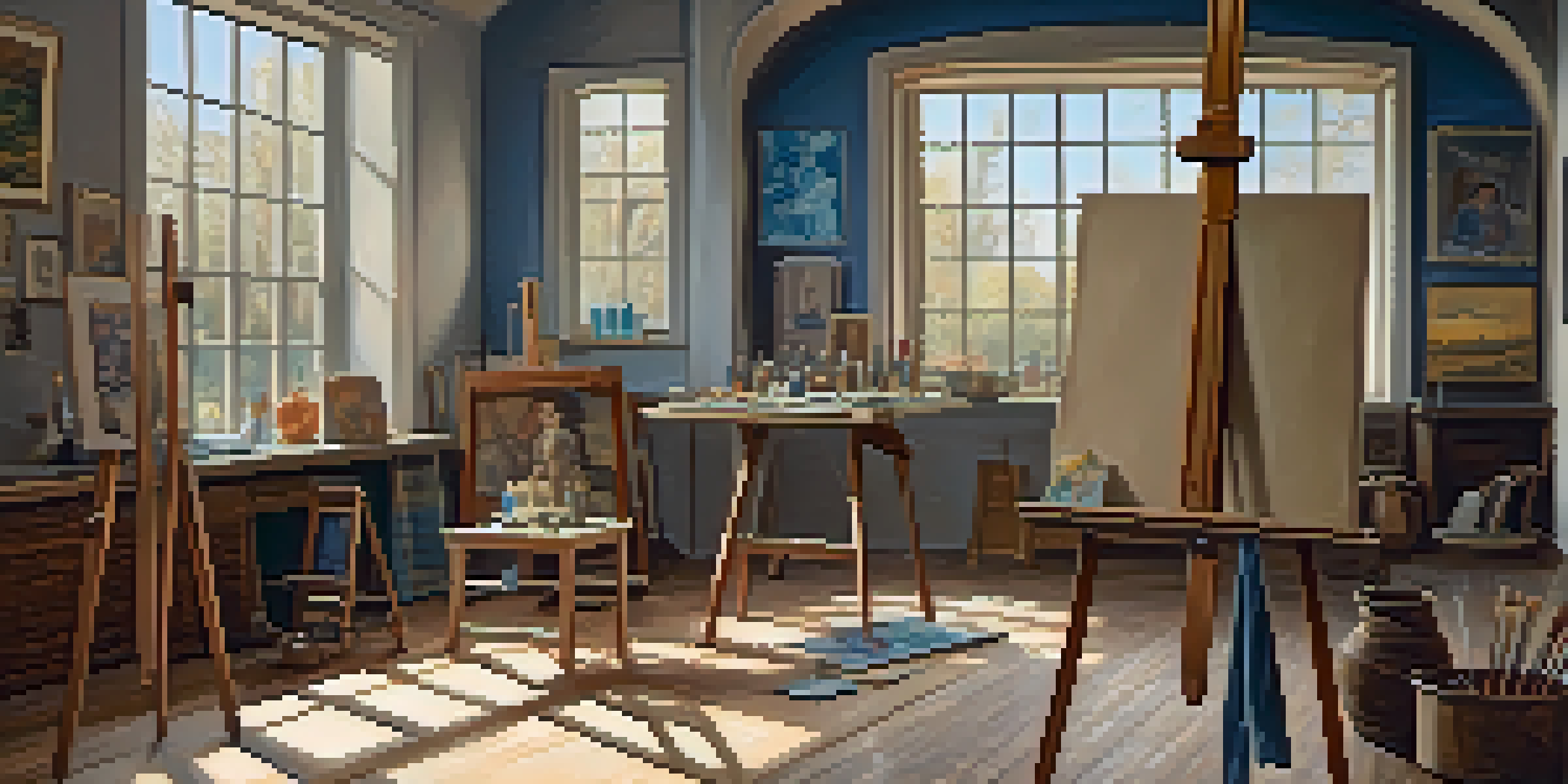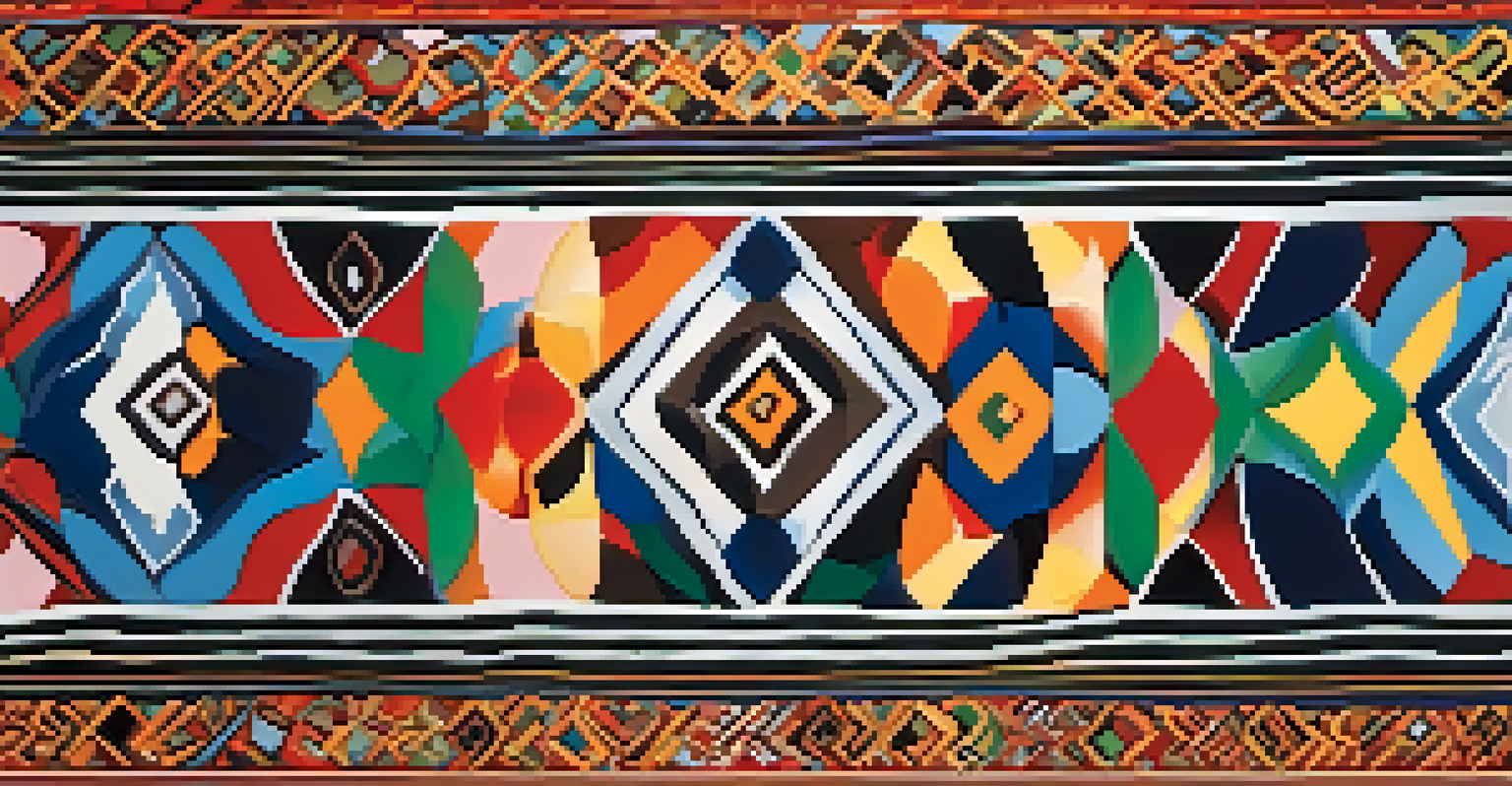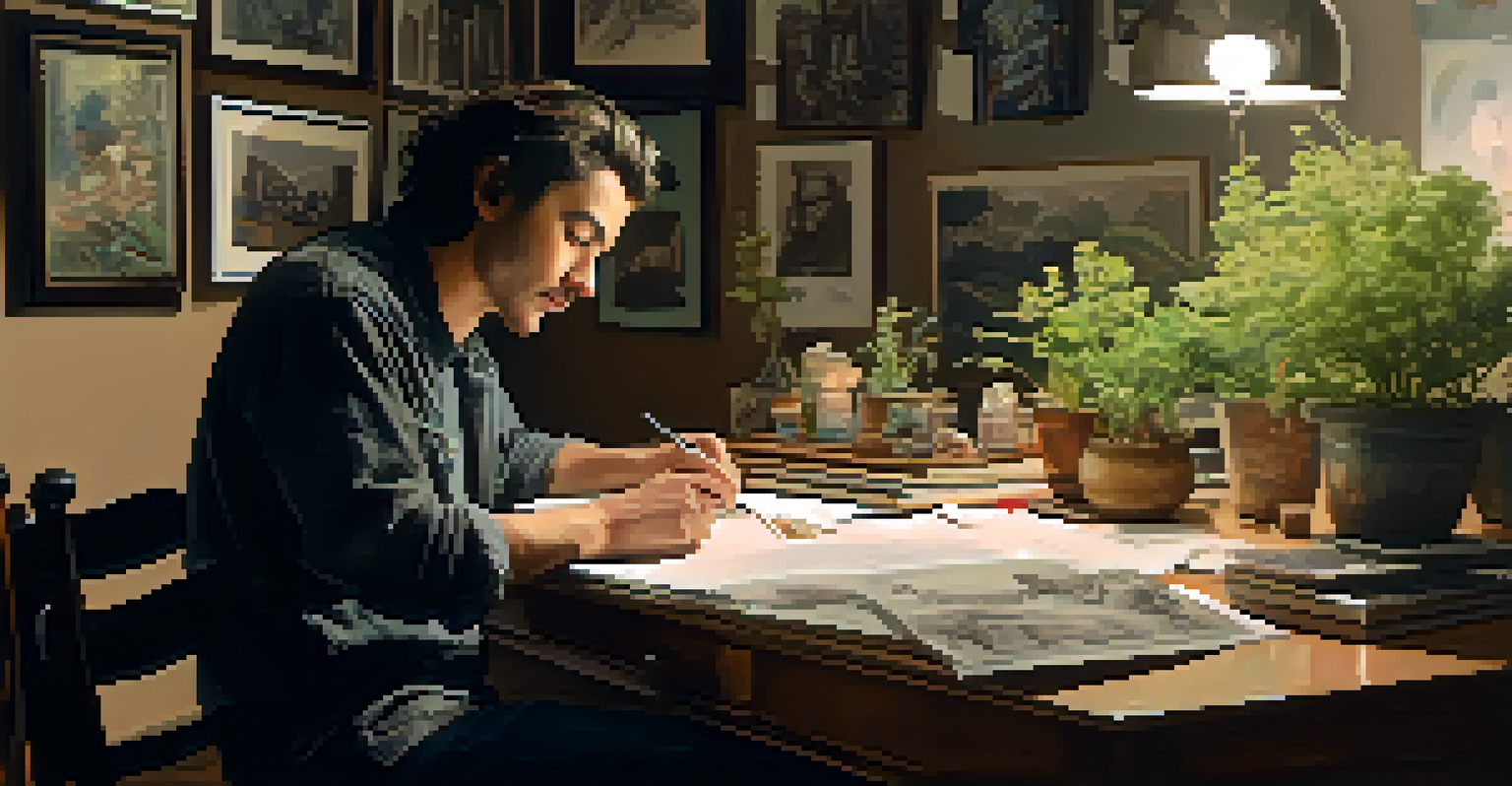The Intersection of Family History and Artistic Identity

Understanding Family History's Role in Art
Family history serves as a rich tapestry that influences artistic expression. Every artist carries a unique narrative shaped by their ancestors' experiences, values, and cultural backgrounds. This lineage often informs their creative choices, from themes and subjects to materials and techniques used in their work.
Art is the most beautiful of all lies.
For example, an artist with a lineage of storytellers may incorporate narrative elements into their pieces, reflecting the oral traditions passed down through generations. Similarly, cultural heritage can inspire visual motifs and symbols that resonate deeply with both the artist and their audience. Thus, understanding family history is key to unraveling the layers of meaning in an artist's work.
Moreover, this connection to family history can evoke feelings of nostalgia and belonging, further enriching the artistic process. When artists draw upon their roots, they not only honor their predecessors but also weave their personal experiences into the broader cultural fabric, creating art that speaks to universal themes of identity and belonging.
Art as a Reflection of Ancestral Influence
Art is often a mirror reflecting the influences of an artist's ancestry. The stories, struggles, and triumphs of previous generations leave indelible marks on an artist's worldview. This can manifest in various forms, whether through subject matter, technique, or the emotions conveyed in their work.

Take, for instance, an artist whose grandparents were immigrants. Their art might explore themes of displacement, belonging, and cultural fusion, capturing the complexities of navigating multiple identities. Through their creations, they share not only their personal narrative but also that of countless others who have walked similar paths.
Family History Shapes Artistic Expression
An artist's unique narrative, influenced by their ancestry, critically informs their creative choices and themes.
This intersection of personal and collective history elevates art beyond mere aesthetics; it becomes a dialogue between past and present. By channeling ancestral experiences, artists invite viewers to engage with the broader human experience, fostering empathy and understanding across diverse backgrounds.
Cultural Heritage as a Source of Inspiration
Cultural heritage plays a pivotal role in shaping artistic identity. Artists often draw inspiration from the customs, traditions, and rituals of their ancestors, infusing their work with cultural significance. This connection not only honors their heritage but also fosters a deeper understanding of their identity.
To be an artist is to believe in life.
For example, an artist from a lineage of textile makers may incorporate traditional weaving techniques into their contemporary art pieces, creating a bridge between old and new. This blending of cultural practices can lead to innovative forms of expression that resonate with both the artist's heritage and modern audiences.
Moreover, embracing cultural heritage allows artists to reclaim narratives that may have been marginalized or overlooked. By celebrating their roots through art, they assert their identity in a world that often seeks to homogenize individual stories. This act of creation becomes a powerful statement of pride and resilience.
The Emotional Connection Between Family and Art
The emotional ties between family and art can be profound. For many artists, creating art is a way to process familial relationships, memories, and even traumas. This emotional connection can lead to powerful works that resonate deeply with both the creator and their audience.
Consider an artist who uses their craft to explore themes of loss and reconciliation stemming from family dynamics. Through their art, they can express feelings that may be difficult to articulate verbally, allowing for healing and understanding both personally and collectively.
Cultural Heritage Inspires Innovation
Drawing from traditions and rituals, artists merge old and new practices, creating culturally significant and innovative works.
Additionally, the act of creating art can serve as a tribute to family members who have influenced or inspired the artist. By channeling their emotions into their work, artists honor their loved ones, creating a lasting legacy that connects generations through shared experiences.
Legacy and Its Impact on Artistic Identity
Legacy is an essential aspect of artistic identity, often shaped by the family history artists inherit. The values, beliefs, and expectations passed down through generations can significantly influence an artist's creative journey. This inherited legacy can either inspire artists to follow in their family's footsteps or motivate them to carve a unique path.
For instance, an artist from a family of musicians might feel compelled to explore sound in their visual art, merging disciplines to create a multi-sensory experience. Alternatively, some artists may rebel against familial expectations, using their art to challenge the narratives they've been given, ultimately forging their own identity.
This interplay between legacy and individual expression highlights the complexities of artistic identity. The tension between honoring one's roots and seeking personal truth can lead to innovative forms of art that reflect both personal exploration and cultural dialogue.
Navigating Identity in a Diverse World
In our increasingly diverse world, navigating identity through art has become essential. Artists often grapple with multiple cultural influences, which can make their artistic identity complex and multifaceted. This diversity can enrich their work, allowing for a broader exploration of themes related to family history and cultural heritage.
For example, an artist with mixed heritage may draw from various traditions, blending styles, techniques, and narratives into their work. This fusion not only reflects their personal experience but also encourages dialogue about the intersections of different cultures and identities.
Legacy Influences Artistic Identity
The values and expectations of family legacy can either inspire artists to follow in their family’s footsteps or encourage them to forge their unique paths.
As artists navigate these complexities, they contribute to a richer understanding of what it means to belong. By representing diverse perspectives in their art, they invite audiences to reflect on their experiences, fostering a sense of community and shared humanity.
The Future of Artistic Identity and Family History
The future of artistic identity is likely to continue evolving alongside our understanding of family history. As society becomes more interconnected, artists will increasingly draw upon their diverse backgrounds to inform their work. This melding of cultural influences can lead to exciting new forms of expression that challenge traditional boundaries.
Emerging technologies and platforms also allow artists to share their stories in innovative ways, reaching wider audiences than ever before. Virtual exhibitions, social media, and digital storytelling provide new avenues for artists to connect their family histories with contemporary issues, fostering a dynamic dialogue between past and present.

Ultimately, the intersection of family history and artistic identity will remain a vital theme in the creative landscape. As artists continue to explore their roots and the stories that shape them, they will inspire future generations to embrace their own histories and express their identities through art.